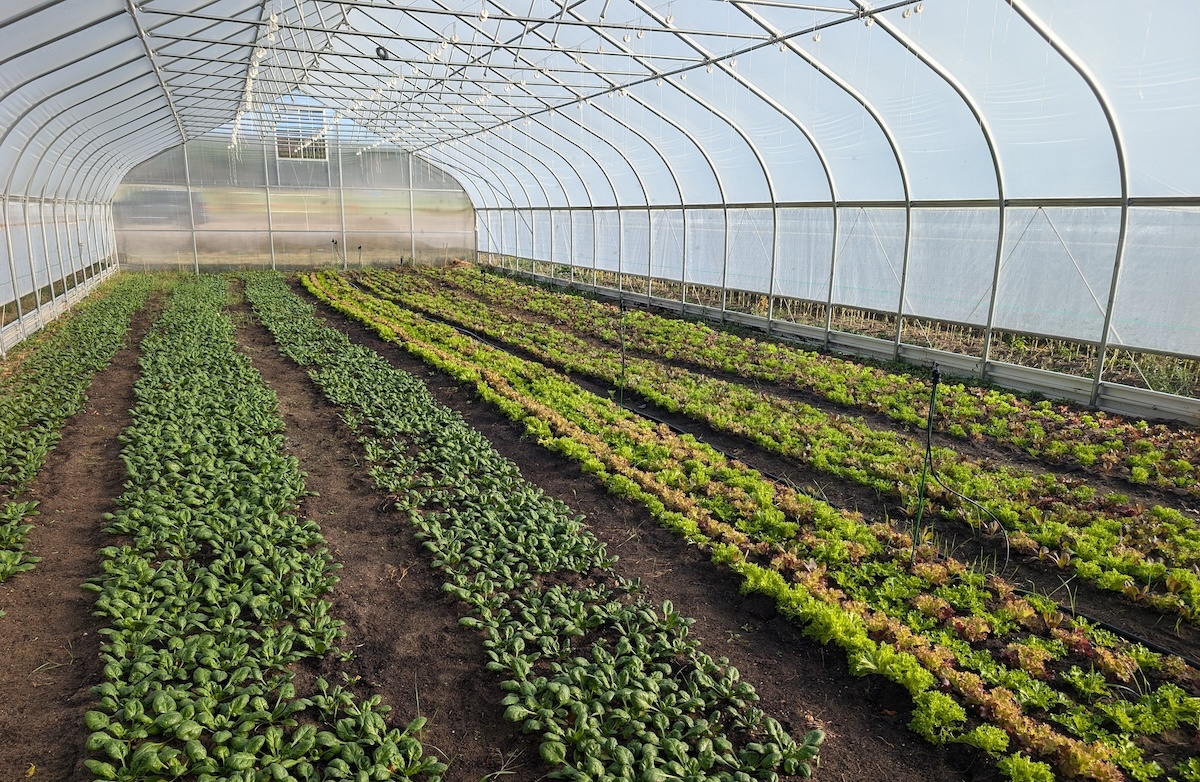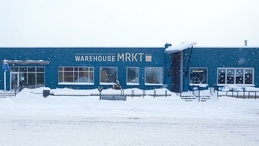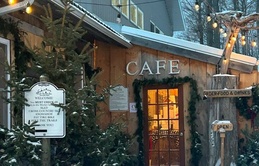
The More You Grow
Extending the growing season this fall
By Drew VanDrie | Oct. 18, 2025
The unseasonably warm September weather and lengthy “locals summer” had some of us blissfully believing that winter may never come. But take heed! The gales of November will inevitably arrive, ushering in the long frigid months of Michigan winter.
But it’s not all gloom and doom! For those looking to pluck a taste of summer and access fresh greens even in the throes of chilly autumn, Northern Express connected with Adam Brown, agricultural program coordinator for the Grand Traverse Conservation District, to discuss tips and tactics on how to extend your growing season and boost your harvest well into the colder months.
Prep and Set-Up
As with any garden undertaking, planting at the proper time and within important windows is paramount for later season success.
“Timing is the big thing,” says Brown. “What happens is that in the first or second week of November, we go below 10 hours of sunlight.” This lack of sunlight shuts down the fast track photosynthesis for most plants and inhibits growth. “Having your seedlings get to maturity before that date is the key thing,” he says.
Preparing an optimum layout to receive as much light as possible is also a key factor when faced with reduced seasonal sunlight.
Brown recommends orienting your garden on any south-facing parcel, with your rows or hoop houses—a type of artificial greenhouse that usually involves steel hoops covered in clear plastic material—in an east/west configuration. (More on how to build those below.) This type of layout can also produce dividends when gardeners are looking to thaw out crops and collect some greens.
Opting for a sunny midwinter harvest, Brown says, “that snow is going to slide off [of the hoop house]—the sun comes out and you can go out there and pull that plastic off or the row cover and enjoy some nice greens that have thawed out.”
The Right Stuff
Once the layout is determined, creating an extended season set-up only requires a few materials.
The first and most approachable option is to install a low plant “tunnel,” which is essentially a small version of a hoop house. “It can be any size,” says Brown. Even if your tunnel extends just above the growing plants, this set-up offers frost protection and boosts interior temperatures to help protect produce. “At the garden scale, the low tunnel can be anything like PVC hoop or wire hoops and some poly dragged over it,” says Brown.
To make the hoops, Brown suggests something simple like 2-foot rebar put into the ground with PVC piping over top to form the hoop. The poly row cover fabric comes in a variety of weights that insulate the interior and allow varying amounts of sunlight through.
“The higher weights you go, the less sunlight gets through, so you have to be aware of that,” he notes. Row fabrics can be purchased from seed providers and gardening shops.
Brown explains that the next expansive option for larger plots or more involved growers is the high tunnel or hoop house.
“These are usually 20-30 feet wide. They come in four-foot increments, so 96 feet is a common length” he says. “Those are your bigger structures, with more bells and whistles: double layer poly for more frost protection and things like that.”
Produce Section Selection
Once you have your garden set up, it’s time to plant. Growers and gardeners may need to be reminded that there are limitations to what can grow in cold temps. As much as we may wish for fresh cucumbers around Christmas, it is probably not feasible outside of a greenhouse.
Brown highlights that plants belonging to the brassica family are the most cold hearty and can survive lower temps and threats of frost. “Start with the kale, spinach, and lettuce,” he says. “They can really take the temperature down to 30 degrees and revive themselves after a frost.”
Brown also points to any Asian greens like bok choy as another good option that can endure the cold.
Besides their ability to survive a frost, Brown notes that these plants can actually be enhanced by the colder conditions. “What makes them really nice is they put more sugar and carbohydrates into their cells so that they don’t burst,” he says. The result is a sweeter flavored kale and spinach for the table. “So the greens actually taste better after a couple hard frosts,” says Brown.
Now is also a time for root veggies: Brown recommends sewing these vegetables at least two and a half months before winter or the “Persephone period” when daylight falls below ten hours a day. All that’s needed is a bit of straw to add some extra insulation for overwintering.
“Put a little straw over those parsnips, and you can dig them up in the spring,” he says. “The same with carrots. Those root crops with a little more frost protection, typically straw, will hold over the winter with that extra insulation.”
Brown does note that root veggies can be a prime target for deer foraging midwinter. Fortunately, hoophouses and row covers afford a layer of protection against deer and other animals.
“That’s another great reason for the covering,” says Brown, “If they can’t access it, they’re not going to be able to munch on it. So, we actually use the row cover fabric not just for frost protection but also for pest control.”
The use of row fabrics can also help protect root vegetables for overwintering. “The heaviest weight row cover fabric can handle the snow load, and it’s not going to tear very easily,” says Brown. “They make like a 30-weight and a 40-weight, so they’re pretty thick blankets. You could put a little bit of straw and a layer of that, and the deer are not going to be able to get to that very easily.”
Bring It Inside
Last but not least, for smaller plants and herbs, coming inside may also be an option. Brown cautions that the idyllic notion of letting herbs flourish in the windowsill all year round may not be feasible with the limited gray winter light. He recommends some supplemental lighting sources such as LED or fluorescents to give inside plants a boost.
In terms of practicality, Brown also says that putting plants indoors may only preserve them for planting next season rather than having fresh options all winter. But hey, that saves time in the spring, right? Brown points to rosemary and other perennials that can be brought inside—though they do go dormant—to avoid the hassle of replanting next year.
Trending

Farm to Glass with Ethanology
When Elk Rapids distillery Ethanology committed to locally-sourced ingredients for their products, it seemed like they&rsquo… Read More >>
MRKT HLDY SHPPNG, aka Warehouse MRKT Holiday Shopping!
Shop the latest from local makers and vendors at the Holiday MRKT Share at Warehouse MRKT in TC, Saturday, Dec. 20, from 10a… Read More >>
Men and Ugly Sweaters
Those two things don’t always go together, but on Dec. 19, you’ll see both out and about in Petoskey and Harbor … Read More >>


